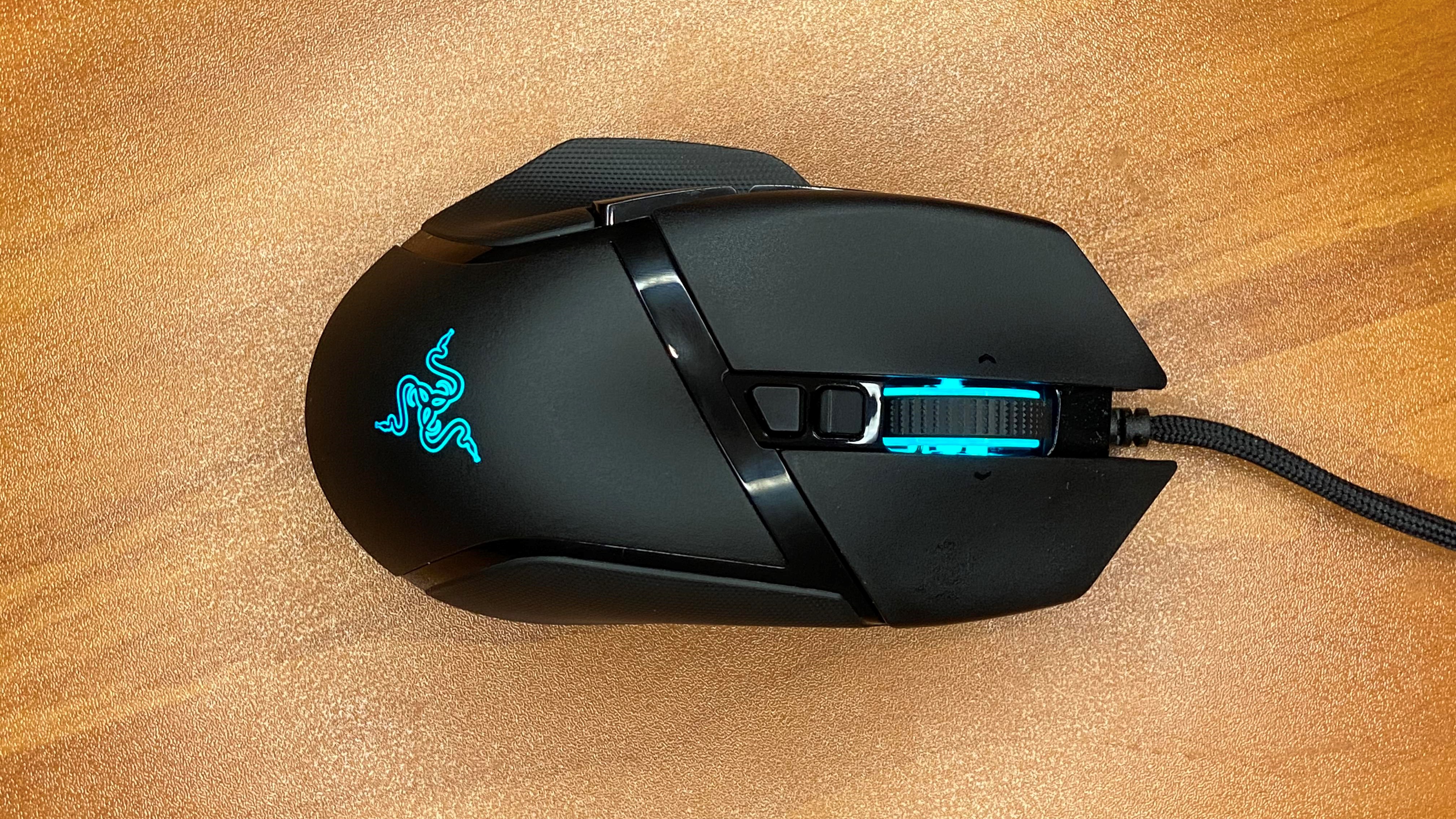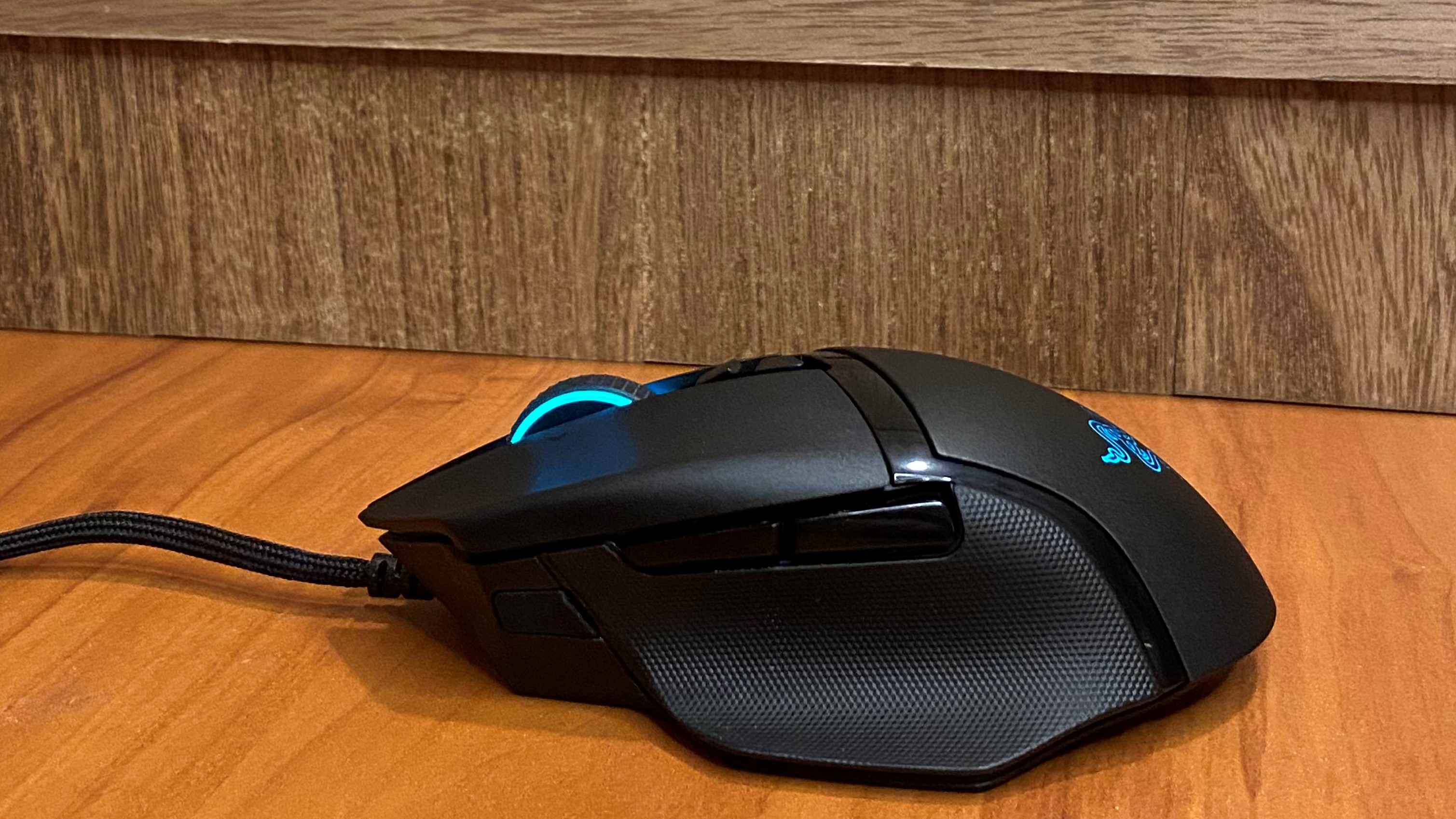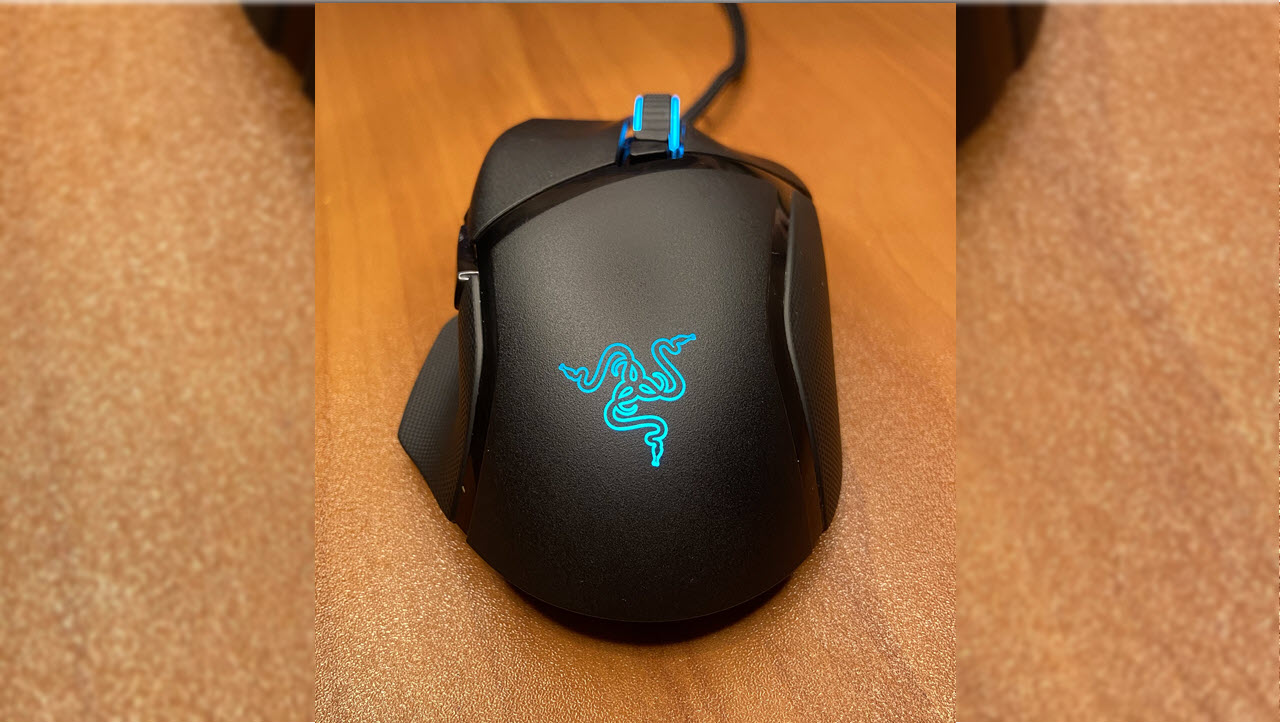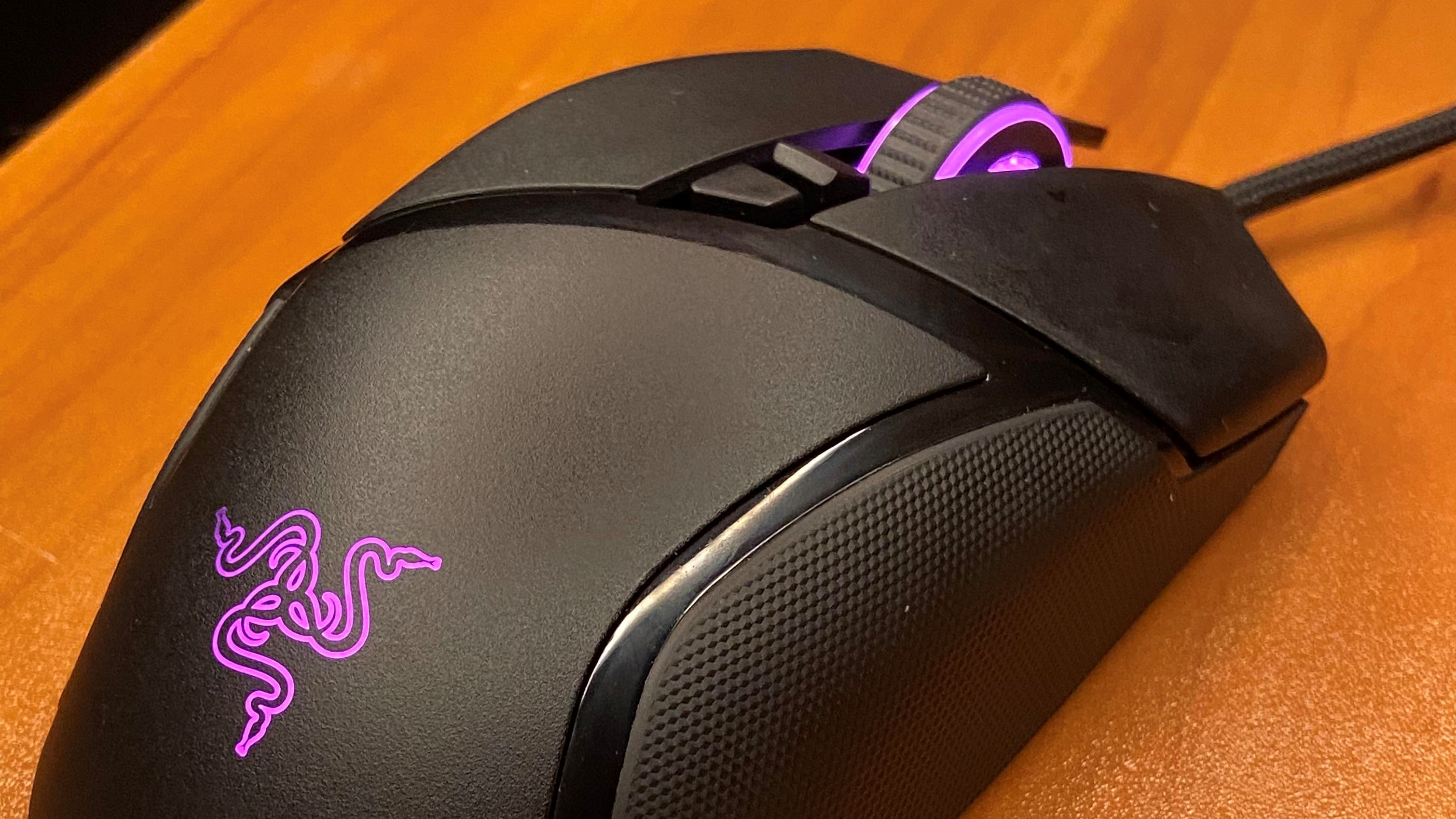Tom's Hardware Verdict
Razer brought the Basilisk into 2020 in the best possible way, thanks to a bevy of new features packed into an ergonomic design at a reasonable price considering what you get.
Pros
- +
Excellent tracking
- +
Ergonomic design
- +
Plenty of customization options
Cons
- -
$80 for a wired mouse is hard to swallow
Why you can trust Tom's Hardware
In another crack at creating the best gaming mouse, Razer updated its three-year-old Basilisk mouse this year. The Razer Basilisk V2 boasts a new sensor, more programmable buttons and other improvements. (Don't fret, Harry Potter fans, we assume no eggs or toads were involved with the birth of this product.)
But the Basilisk V2 has a tough act to follow, and to get there it does so with a high price ($80 at the time of writing) for what’s still a wired pointer. But this basilisk earns its keep by proving a better contender than Razer-branded competition.
Razer Basilisk V2 Specs
| Sensor Type | Optical |
|---|---|
| Sensor Model | Razer Focus+ |
| Sensitivity | Up to 20,000 CPI |
| Polling Rates | 125, 500 or 1,000 Hz |
| Programmable Buttons | 11 |
| LED Zones and Colors | 2 RGB zones |
| Cable Length | 7 feet (2.1m) |
| Measurements (LxWxH) | 5.11 x 2.36 x 1.65 inches (12.98 x 6 x 4.19cm) |
| Weight (excluding cable) | 3.3 ounces (93.55g) |
Design and Comfort



The Basilisk V2 is a right-handed mouse with a matte palm rest, textured scroll wheel and stippled thumb rest. It targets palm or claw grips and is a bit more angular than the original Basilisk, but aside from that, most of the changes between models aren't visible at a glance.
I found the Basilisk V2 far more comfortable to use for longer periods than the Razer DeathAdder V2. That's most likely because the Basilisk V2 is ever so slightly shorter, measuring (L x W x H) 5.11 x 2.36 x 1.65 inches compared to the DeathAdder V2’s 5 x 2.43 x 1.68 inches.
Being a bit longer, narrower and shorter means the Basilisk V2 doesn't have the same bulbous feel as the DeathAdder V2. Its textures are also gentler. People with big hands who like rough textures might favor the DeathAdder V2; everyone else might prefer the Basilisk V2. There's no right or wrong choice here.
An upgrade from the original Basilisk’s eight programmable buttons, the Basilisk V2 features 11 programmable buttons: the primary mouse buttons, the two side buttons, the scroll wheel, the scroll wheel button, two tilt wheel buttons, two CPI switches and the Razer Hypershift button. Pressing that last one temporarily switches the Basilisk V2 over to another profile, which means it essentially has 20 programmable buttons in total, excluding the Hypershift button.
I don’t use that many side buttons. In most of the FPS games I play all I need are the primary mouse buttons for aiming--and, you know, shooting--with a scroll wheel to cycle through weapons and at least one side button so I can trash talk my team. (By which I mean “make effective and respectful callouts to my fellow players.”) But people who play games that rely on more inputs, such as MMORPGs, will appreciate the ability to map a whole bunch of actions to dedicated buttons.
Get Tom's Hardware's best news and in-depth reviews, straight to your inbox.
Otherwise, the Basilisk V2 looks like your typical Razer product. It features sharp angles, various shades of black and two RGB lighting zones that support up to 16.8 million colors. Never let it be said that Razer didn't have a consistent aesthetic.
Gaming Performance
Razer equipped the Basilisk V2 with many of the same features it added to the DeathAdder V2. It boasts the same Razer Focus+ optical sensor with support for up to 20,000 CPI, 650 inches per second (IPS) and 50g acceleration. There’s also the Razer Speedflex cable that minimizes drag and Razer-branded optical switches that the company claims can withstand 70 million clicks.
The Basilisk V2 offered similar performance to the DeathAdder V2. I didn't have any problems with the mouse's tracking or notice any mis-clicks (much to my chagrins, as the recent influx of gamers for many popular titles humbled me a bit). My inability to keep up with Call of Duty: Modern Warfare players sprinting across the map and blowing my head off moments after they appear on my screen is my fault alone; the Basilisk V2 performed exactly like it’s supposed to.
The Basilisk V2 starts to beat out the DeathAdder V2 with its side buttons. They're larger, which makes them easier to locate, and I never wonder if I've actually pressed one. I wasn't a fan of the DeathAdder V2's side buttons because it was hard to press one without accidentally activating the other and overall difficult to tell if either one was ever pressed hard enough. The Basilisk V2's improved buttons give it a clear advantage over the DeathAdder V2.
It seemed like Razer finally stumbled with the Basilisk V2's scroll wheel, which had too much resistance by default. Finally, the DeathAdder V2 could actually compete, I thought. Alas, the Basilisk V2 boasts customizable scroll wheel resistance (see the Features and Software section below), so it should be easy for anyone to get the feel just right.
Adjusting the scroll wheel’s resistance did require a little trial and error, though, because it gradually changes the scroll wheel’s tightness as it’s turned. There are no presets to click through, nor indications of how much the resistance has changed. The best way to find the right setting for you would be to move the dial a bit, flip it over, give the scroll wheel a few flicks and then re-adjust in whichever direction you feel is best.
Features and Software
The Basilisk V2 is compatible with the Razer Synapse 3 beta app, where you can manage various settings. You can set the sensitivity to anywhere from 100 to 20,000 CPI with support for saving up to five sensitivity levels that can be cycled through using the CPI switch directly south of the scroll wheel.
Razer Synapse can also control the Basilisk V2's polling rate, which can be set to 125, 500 or 1,000 MHz, and configure the Razer Focus+ sensor's handling of various mouse mats. (Although I'm fairly certain most people won't notice a difference regardless of whether or not they use that particular setting.)
But most people will probably end up using Razer Synapse to assign specific functions to the Basilisk V2's 11 programmable buttons. The mouse supports Razer Hypershift, too, which allows it to switch to a different profile when you hold down the assigned button. So it essentially has 22 different inputs.
Fear not, RGB enthusiasts, Basilisk V2 also works with Razer Chroma. It has two lighting zones--the scroll wheel and the logo in the palm rest--that you can program to their own colors or lighting effects, like spectrum cycling or breathing. Razer Chroma can also keep the lighting in sync with other Razer peripherals you might own that support the utility.
Razer Synapse and Razer Chroma are fine. I'd prefer if Razer didn't push its accounts on people, and sometimes the app is convinced there isn't an available update when there is, but I've used more frustrating software to manage worse mice. And Synapse 3 is still in beta mode, so it’s not surprising that there’s room for improvement.
Bottom Line
Razer’s DeathAdder V2 is likable, but the Basilisk V2 is a homerun. The DeathAdder V2 only has a few issues, none of which are major. But those problems--the bulbous palm rest and rough texturing--did manage to dampen my enthusiasm for the mouse. The Basilisk V2 is almost identical to the DeathAdder V2 specs-wise but doesn’t have those problems.
The Basilisk V2 is more comfortable to use for extended periods and its customizable scroll wheel gives people even more control over their experience. It's pricey for a wired mouse, but the Basilisk V2 earns its $80 asking price.
MORE: Best Gaming Mice
MORE: Gaming Mice Reviews
MORE: Best RGB Mouse Pads

Nathaniel Mott is a freelance news and features writer for Tom's Hardware US, covering breaking news, security, and the silliest aspects of the tech industry.
-
hotaru251 the price is the killer imho.Reply
at that price you can get a known good mouse from logitech (and given peoples comments on the old deathadder i'd not take the risk at that price on a mouse) -
Giroro My experience using Razer as my primary mouse is that their Synapse software is a massive Con.Reply
Its buggy bloated spyware that requires a login and makes you look at a splash screen whenever you boot the computer.
I just want a small utility that makes the lights and sensitivity work, not some massive Geforce-Now looking brand engagement platform that eats way more RAM than I thought possible. -
MrPeonbody I'm not a fan of razer synapse. And I feel like I've been burned by their past mice. Like the wobbly razer orrochi, insensitive left click naga v2, and now the insensitive middle click hex v2. But to their credit, the latter 2 started performed poorly well after the warranty.Reply
Anyways, this mouse hits all these points and now I must buy it:
sub 100grams
adjustable scroll wheel (arguably as good or better than infinite scroll wheel)
right hand bias
Otherwise my choice would have been the g pro wireless. If Logitech implemented adjustable or infinite scroll wheel on the g pro wireless, I'd buy that in a heartbeat instead. -
BlazingSoup Bit of a necro, but as I just got one of these from Prime Day, I can’t help wonder what all the complaints about Synapse are. If this has onboard profiles, doesn’t this mean you can just set up your profiles once on Synapse, and then never have to use it again, let alone leave it on in the background?Reply -
blink'0' Reply
I have been using their software for my headset, and well it isn't buggy in my opinion. It has worked perfectly fine, except for one or two crashes.Giroro said:My experience using Razer as my primary mouse is that their Synapse software is a massive Con.
Its buggy bloated spyware that requires a login and makes you look at a splash screen whenever you boot the computer.
I just want a small utility that makes the lights and sensitivity work, not some massive Geforce-Now looking brand engagement platform that eats way more RAM than I thought possible.

